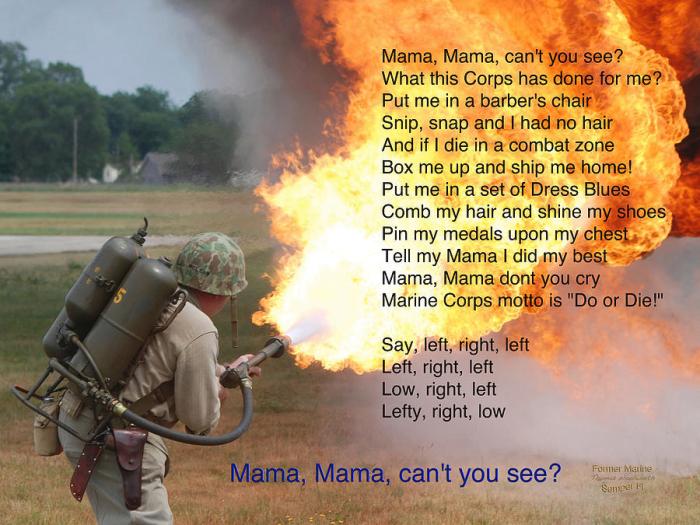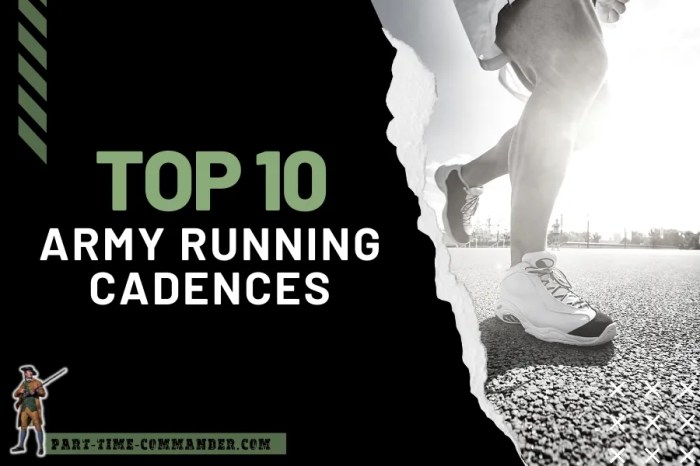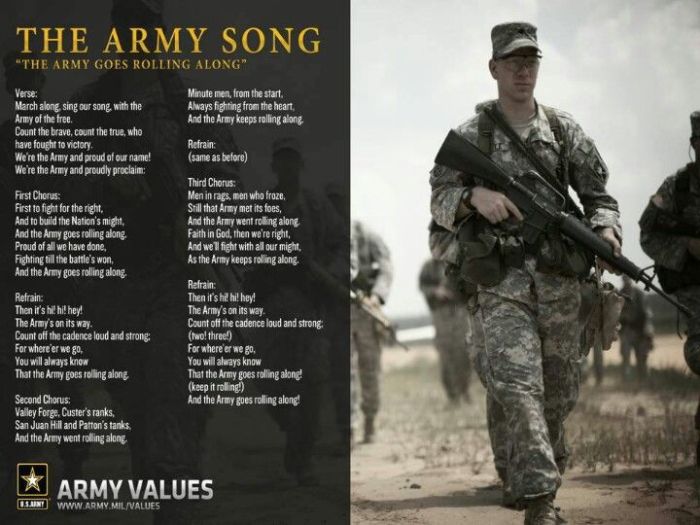Mama mama can’t you see army cadence – Beginning with the iconic “Mama Mama Can’t You See,” this article delves into the rich tapestry of army cadences, exploring their historical origins, lyrical depth, musical structure, cultural significance, and modern adaptations. Prepare to march through time and uncover the captivating story behind these rhythmic anthems that have inspired and united soldiers for generations.
In the annals of military history, cadences have played an integral role, boosting morale, fostering camaraderie, and providing a rhythmic soundtrack to the arduous journeys of soldiers. This article aims to shed light on the multifaceted nature of these cadences, examining their historical evolution, lyrical nuances, musical intricacies, and profound impact on military culture.
Historical Origins

The “Mama Mama Can’t You See” cadence originated within the United States military during the Vietnam War. It was initially sung by African American soldiers as a way to express their frustrations and longing for home amidst the horrors of war.
Over time, the cadence evolved and spread throughout the military, becoming a staple of training exercises and a symbol of camaraderie and resilience. It has been used in various military campaigns, including the Gulf War and the War in Afghanistan, serving as a morale booster and a reminder of the shared experiences and sacrifices of soldiers.
Lyrical Analysis
The lyrics of the cadence are simple yet poignant, capturing the emotional turmoil and longing of soldiers. The repetitive refrain “Mama, mama, can’t you see” expresses a yearning for the comfort and safety of home, while the lines “I’m so tired, I want to go to bed” and “I don’t know, I don’t know” convey the exhaustion and uncertainty of life in a war zone.
The cadence also includes references to the horrors of war, such as “I’ve seen my buddies die” and “I’ve seen my buddies cry,” highlighting the psychological toll that combat can take on soldiers.
Musical Structure
The cadence is typically sung in a call-and-response format, with a lead singer or group singing the verses and the rest of the group responding with the chorus. The melody is simple and repetitive, consisting of a few basic notes, while the rhythm is steady and march-like.
The musical structure of the cadence contributes to its effectiveness as a morale booster. The repetitive melody and rhythm create a sense of unity and cohesion, while the simple lyrics make it easy for soldiers to sing along and express their emotions.
Cultural Significance
The “Mama Mama Can’t You See” cadence holds significant cultural significance within the military community. It is a symbol of the shared experiences and sacrifices of soldiers, and it serves as a reminder of the importance of camaraderie and esprit de corps.
The cadence is often sung during training exercises, marches, and other military events. It is also used as a way to honor fallen soldiers and to express the bonds that exist between those who have served.
Modern Adaptations, Mama mama can’t you see army cadence
In recent years, the “Mama Mama Can’t You See” cadence has been adapted beyond the military context. It has been incorporated into popular culture, including music, film, and television, and has been used by various groups to express their own experiences of struggle and longing.
For example, the cadence has been used by civil rights activists to protest racial injustice and by LGBTQ+ individuals to express their experiences of discrimination and isolation. It has also been used by musicians and artists to explore themes of war, loss, and the human condition.
Questions and Answers: Mama Mama Can’t You See Army Cadence
What is the significance of the lyrics in “Mama Mama Can’t You See”?
The lyrics express the longing and homesickness of soldiers, capturing the emotional toll of being away from loved ones while serving their country.
How does the musical structure of army cadences contribute to their effectiveness?
The repetitive rhythm and simple melodies enhance memorability and allow soldiers to synchronize their steps while marching or running.
What role do army cadences play in fostering camaraderie?
By singing cadences together, soldiers create a sense of unity and shared purpose, strengthening their bonds and boosting morale.

